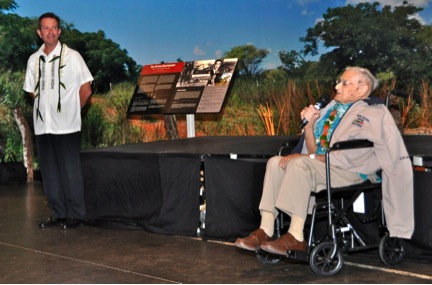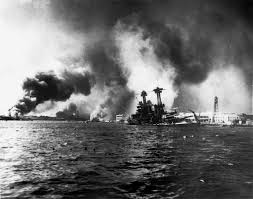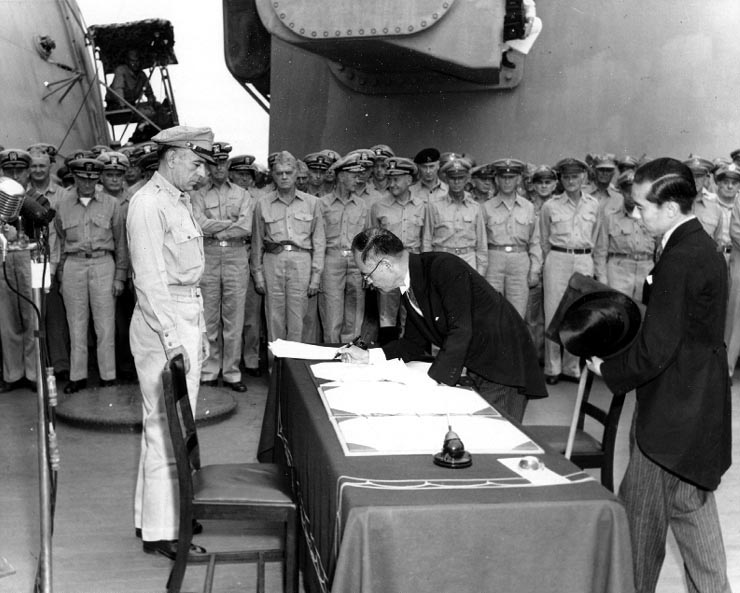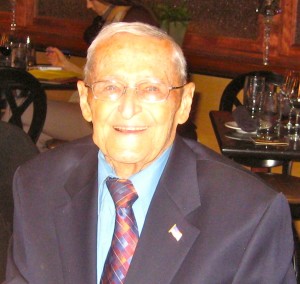
(Mac Showers speaks to an audience about the Battle of Midway at the 70th Anniversary in 2012. J2 RADM Paul Becker looks on. US Navy photo).
Snow still on the ground, temps still barely climbing to the double digits. I am going to Suitland for a military retirement this afternoon, though I would prefer to stay off the road and let the weekend wash over me like the broken water mains that are failing all over town.
Up North they are ready for this stuff. Here? Not so much.
I knew this was an uncommon event sitting at the apex of the Willow’s Amen Corner last night. Old Jim managed the trudge down the block, and Jon-without and TLB and the gang were there, all of us sharing some cabin fever. But when people came in and out of the double doors the icy blast reached right in and caressed my spine with frigid fingers.
When I got home I heated some protein and went through the accumulated messages. Two I had to flag for follow-up action when I was more articulate: one had an article about the fight the Vietnamese and the PRC had over the Paracel Islands in the waning days of the American War, and the successful effort of the Chinese to extend their sway by force.
Forty years ago, and here we are again, perhaps on the edge of armed conflict. The other message of note had the two articles attached to this missive. I thought about Mac, and how I wished I could just ask him what the truth was, and not have to worry about sorting it out myself.
Being a semi-literate Boswell to his Dr. Johnson was an honor, though his passing made our world a little smaller and less richly textured.
I opened them up and read both articles this morning over the first couple cups of dark-roasted Dazbog Russian while-bean coffee. This is not a homework assignment, and I include the files purely for your information. The struggle over the Truth is nicely addressed by both authors, and any information campaign large enough to cover a global war is obviously going to have some soft spots in it.
Considering the matter, I fell into a reverie of an afternoon- a warm afternoon- sitting next to the Admiral at Willow, asking him to walk me through the second Japanese attack on Pearl. It happened shortly after he arrived there and started to work at Station HYPO for legendary code-breaker Joe Rochefort.
Mac told the tale of “Operation K” with great vigor, and I was stunned that in all my reading about the attack and the aftermath, I had not noticed the event. The Japanese intended to spread a little terror in Hawaii with a night flight by two big Kawanishi H8K “Emily” flying boats. Looking through my notes on the bar napkins, I was amazed to find that it was the longest-range two-plane bombing sortie ever planned without fighter escort.
As things played out, Pearl was protected by clouds, and the Japanese flew blindly over Honolulu for a while before finally dumping their bombs near the Punchbowl. Irritation, not terror, was the result.
Mac said that Joe Rochefort blamed Jasper Holmes for that one, and it wa not entirely in jest. Jasper had been the author of thriller articles between the wars, and once published a fictional account of a Japanese seaplane attack on Pearl using seaplanes refueled by submarines while at anchor at French Frigate Shoals in the Saturday Evening Post.
The whole thing blew my mind. The first was that the Japanese did it at all was amazing, and then that men I regarded as heroes could play out their creative differences on the same staff. But people are people, regardless of what era in which they live.

That is what intrigued me about the article by Eric Dahl, and the continuing controversy over who was responsible for the intelligence failure that sank the Pacific Fleet and killed thousands of sailors.
We have talked before about what Washington saw fit to tell Pearl Harbor, and one strand of intelligence was a series of near-daily messages from the Japanese Consulate in Honolulu back to Tokyo, informing Fleet HQ about which ships were at which anchorages in the harbor.
This stream of information was controlled by Richmond Kelly “Terrible” Turner in the Navy’s Office of War Plans. This became known as “The Bomb Plot” messages, using the Naval context of the term ‘plot’ as a map notation rather than some conspiracy. Although of course, it was that too.
It wa sa curious thing. Turner thought pacific Fleet commander Husband Kimmel had no need to know that the Japanese wanted precise locational information daily on his ships. That, in turn, played into the counterintelligence matter of whether there were Japanese spies on O’ahu. That would drive the response, which was the threat was not from Japanese warships, but rather from American citizens of Japanese extraction.
That the Consulate in fact had a HUMINT collector was a matter that was denied and then revealed by turns as the investigations- or witch hunts- continued after the attack itself, and after the war was concluded on terms favorable to the United States.
It all muddied the waters of warning and responsibility. I think clearly that Fleet Intelligence Officer Eddie Layton would have had a different perspective on what was coming, if he had known that Toyko was interested in a daily account of what fleet units were at which specific anchorages.
Admiral Nimitz appears prominently in the first article, as it attempts to compare and contrast the intelligence failure at Pearl, and the intelligence success at the battle of Midway that turned the tide.
Nimitz did not trust his intelligence officers blindly, and I talked with Mac about that many a time. The matter of radio silence by the Japanese Fleet in both attacks, and warning of their location is one that deals with what the system was able to read, what it was able to interpret, and how the information could be fused to present an actionable course to a gifted and bold commander.
Really, intelligence is nothing more than objective and classified journalism: the who, what, where and why of an effective story are precisely the same.
The article by Villa and Wilford argues something quite different, and gets to something I would like to ask Mac about right now. Their article speaks plainly to the fact that this is an information warfare puzzle about history itself. The attack on Pearl happened. Scapegoats had to be found. Kimmel and Short were the patsies. Note, if you will, the amazing amount of primary information that has strangely gone missing: the SS Lurline radio logs that might have proven the Japanese were coming, watch logs from HYPO, whole years of files from ONI vanished.
To me these curious missing documents suggest something else that was not explicit in the article. It is plain that someone was covering their ass, big time, and cleaning up the files to ensure that the story was what they wanted it to be when the shooting was done.
You recall the brilliant ruse to trick the Japanese into revealing the target- it happened at Mac’s desk in The Dungeon. Jasper Holmes came up with the idea to tell Midway Island via submarine cable (which the Japanese could not copy) to send an unclassified radio message that the water supply was becoming critical. Sure enough, the Japanese picked up the message and issued their own report that “AF” was short on water. That meant AF = Midway.
It actually was much more than a brilliant ruse to confirm that Midway was the target. Admiral Nimitz was interested in convincing Washington, not himself, about what the target might have been. DC was clearly an adversary in the intelligence picture.
And don’t forget that rogues and careerists were present in The Greatest Generation. I did not read the names of Richmond Kelly Turner, nor the Redman Brothers in the article, but I am convinced that the three of them were busy behind the scenes to ensure that the correct story was what history learned.
Factor in two important additional issues: national security in 1945 clearly meant that cryptologic triumphs (and failures) remained highly classified. So there is that, and then there are careers and reputations that needed to be protected.
The famous near-fist fight between ADM Turner and Mac’s boss Eddie Layton over ADM Kimmel’s guilt onboard the USS South Dakota the night before the formal surrender in Tokyo Bay is a case in point. Turner was drunk, and publically blaming Kimmel for something that he himself was actually culpable. The Radio Intelligence crowd had nearly four years to vacuum the official records between the first and second Congressional investigations of the attack on Pearl.

The issue of why primary source documents are still being withheld suggests that something else is going on in the accepted narrative, and that at a minimum a “perception management” effort was conducted to protect those whose errors in judgment lead directly to the disaster.
Was it FDR? I think it is more likely that it was the middle grade within the Radio Intelligence organization. But someone worked hard to ensure that when the time came that the past was to be examined, some of the critical information was long gone, and the great Traditional vs Revisionist history would go on until everyone who participated was in their graves.
And you know what? Almost all of them are. And we still don’t know the truth, though I think we have a pretty good idea of the consequences.

Copyright 2014 Vic Socotra
www.vicsocotra.com
Twitter: @jayare303Tru
